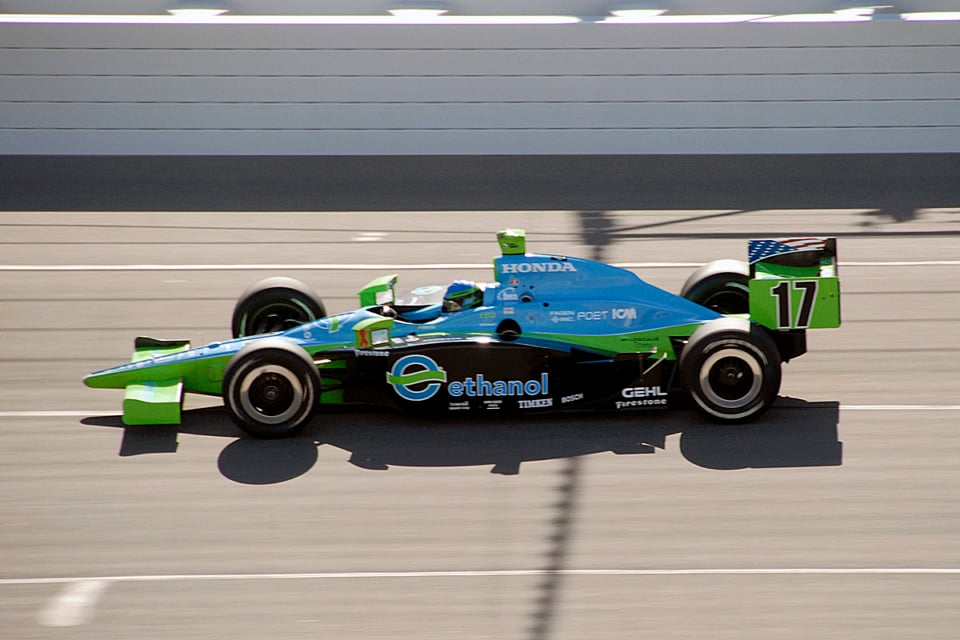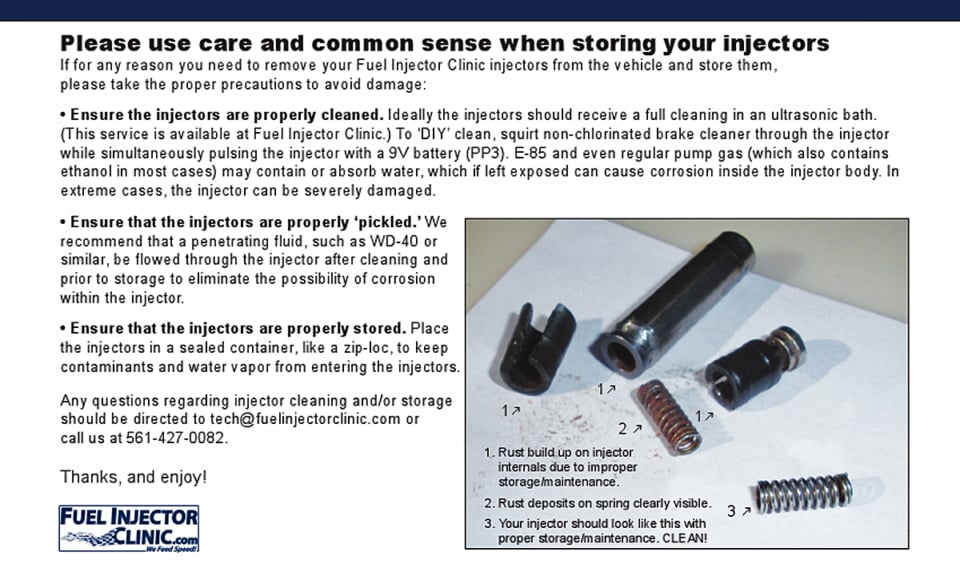Clearing Up Myths About E85 And Ethanol: 16 Things You Need To Know
Over the years we’ve seen all sorts of misinformation floating around the web on various forums and other social media interfaces with respect to E85 and ethanol fuels, so in the interest of education, we’ve taken some of those questions and put them into a Q&A format for you, dear reader. Without further ado, here are 16 things you need to know to maximize your E-xperience.
Q: What is ethanol?
A. Ethanol is a fuel created from the distillation of sugar. This fuel comes from renewable resources, such as corn and sugar cane. This fuel has certain advantageous attributes that make it a popular fuel for performance and racing. Currently NASCAR uses a race gasoline mixed with 15-percent ethanol, and the Indycar Series racers that initially switched from methanol to E98 subsequently converted to E85 in 2012.
Q: What is E85?
A: Anytime you see gasoline with an E prefix, that indicates the fuel contains a given percentage of ethanol. So E10 would contain 10-percent ethanol, E30 is 30-percent ethanol by volume and so on. This makes E85 a fuel with 85-percent ethanol and 15-percent gasoline. Along these same lines, E0 would indicate no ethanol is added to the gasoline.
Q: I’ve heard that ethanol is corrosive.
A: Ethanol by itself is not corrosive. E98 will likely contain an average of 0.5-percent water. This is because it is extremely expensive to remove that last bit of water. When ethanol is mixed with sufficient amounts of water, this can cause corrosion, but the effects can be minimized with easy steps such as keeping the fuel tank full when the vehicle is stored. Oddly, ethanol is also an excellent cleaner and will remove deposits often left by “bad gas.” Ethanol is often mistaken or linked with a fuel called methanol, a wood- or petroleum-based alcohol that is especially corrosive when stored in solution with bare aluminum. Ethanol is not an acid and has little effect on aluminum fuel system components.
Q: What is E85’s octane rating?
A: Gasoline is most often rated on an anti-knock index (AKI) that averages both a research and motor octane number. Premium pump gasoline (E10) is most commonly found with either 91 or 93 AKI. E85 has an octane rating between 100 and 105. You will read claims that can vary by a tremendous amount. This number can vary depending upon some complex ways that octane is measured which do not take into account E85’s ability to cool the inlet air.
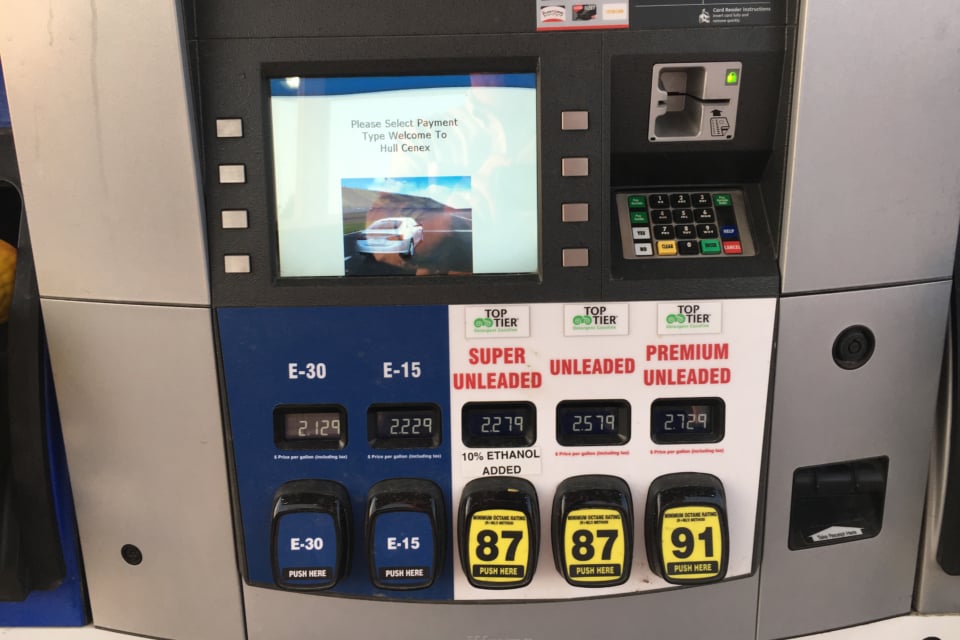
As ethanol becomes a more accepted alternative fuel, you will begin to see more blender pumps that will offer percentages of ethanol like E15, E30 or E85.
Q: Can I pump E85 into the gas tank and run it?
A: If your car is a factory-built Flex-Fuel Vehicle (FFV) the answer is yes. But for a typical late-model car the answer is no without making significant changes to the amount of fuel delivered by the fuel injectors. Older carbureted cars and performance cars can be adapted to take advantage of this fuel’s outstanding octane and cooling benefits.
Q: What is the difference between ethanol and methanol? I’ve heard that methanol is nasty stuff and really corrosive.
A: Ethanol (sometimes referred to as E98) is simply no different than distilled spirits – sippin’ whiskey, if you will. The other 2-percent is gasoline, so it should definitely not be consumed. This fuel offers many of the benefits of using alcohol as a fuel with fewer of the negative side effects. Methanol is often called wood alcohol, or it can be made from natural gas. Methanol is toxic and should not be ingested. Methanol also has a lower heat content. However the BTU (heat) content of methanol is roughly half that of gasoline, which means you have to burn twice as much to make the same heat. Methanol is also more corrosive than ethanol, which is why ethanol is a better choice for street-driven engines. Indy cars prior to 2006 used methanol, converted for a short time to E98 and now run E85. NASCAR recently switched to Green E15 for the Cup cars.
Q: What is denatured alcohol – is that different from ethanol or E85?
A: Both start as ethanol, which is a spirit derived from any number of sources, the common being corn and (or) grains. Denaturing adds a small percentage of a poison like gasoline to the ethanol to render it toxic to ingest. This is done to allow its manufacture for purposes other than for human consumption. Other than the additive, it is usually straight ethanol, although our sources indicate that fuel grade ethanol has impurities like iso-butanol, which will certainly make someone very ill if consumed.
Q: Can I just increase the size of the jets in my carburetor and use E85?
A: The simple answer is that this probably will not work. E85 has roughly 25- to 30-percent less heat per pound of fuel so you need to increase the size of the jetting by roughly that much. So if the stock jetting was 75, it would require as large as 100 to 105 jets. This becomes an issue because the rest of the carburetor is not appropriately sized to meter that much fuel. It’s better to invest in an E85-designed carburetor. There are several companies that offer E85-specific model carburetors.
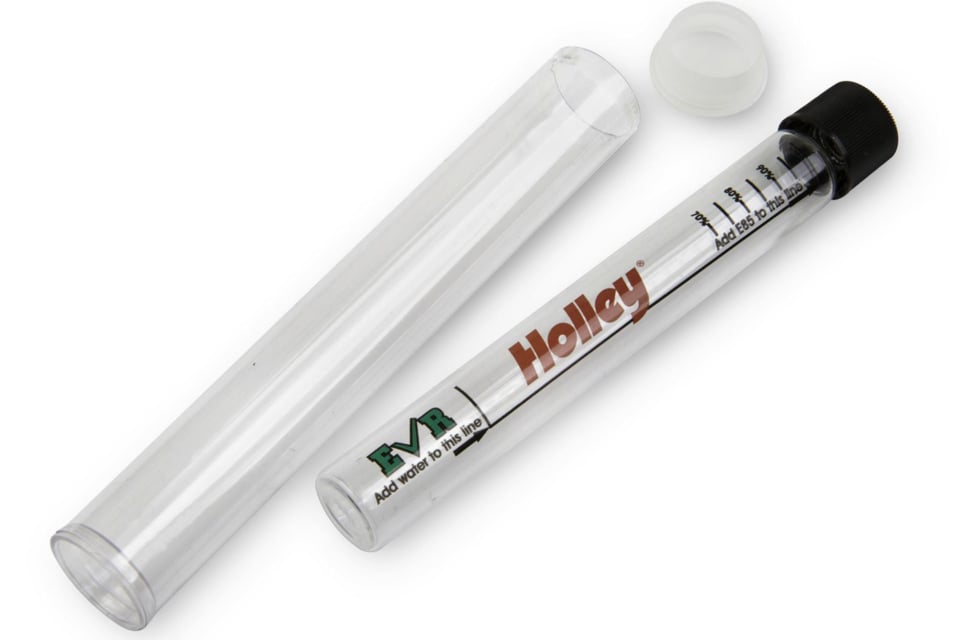
A quick way to measure a percentage of ethanol in gasoline like E85 is with this simple glass vial tester from Holley. Add a measured amount of water with the fuel, and mix it. The water will separate the fuel from the gasoline and display the ethanol percentage.
Q: Why does an engine require more E85 to make power compared to gasoline?
A: This has to do with ethanol’s chemical makeup. Because ethanol contains oxygen, it produces less heat for the same volume of fuel. As an example, a gallon of gasoline typically will produce 114,000 BTUs of heat while ethanol comes in at a lower rating of 76,600 BTUs per gallon. You will read estimates of 15- to 18-percent loss in mileage-per-gallon when using E85 compared to gasoline in flex-fuel vehicles (FFV). But an interesting change occurs with E85. It has a much greater cooling effect on the inlet air than gasoline and also delivers a much higher 98 to 100 octane rating. For any engine that can benefit from a fuel with a higher octane, it’s common to see a significant power improvement when using E85. This is especially true with supercharged or turbocharged engines. For naturally-aspirated, street-driven vehicles, there will be a mileage penalty with E85 compared to gasoline.
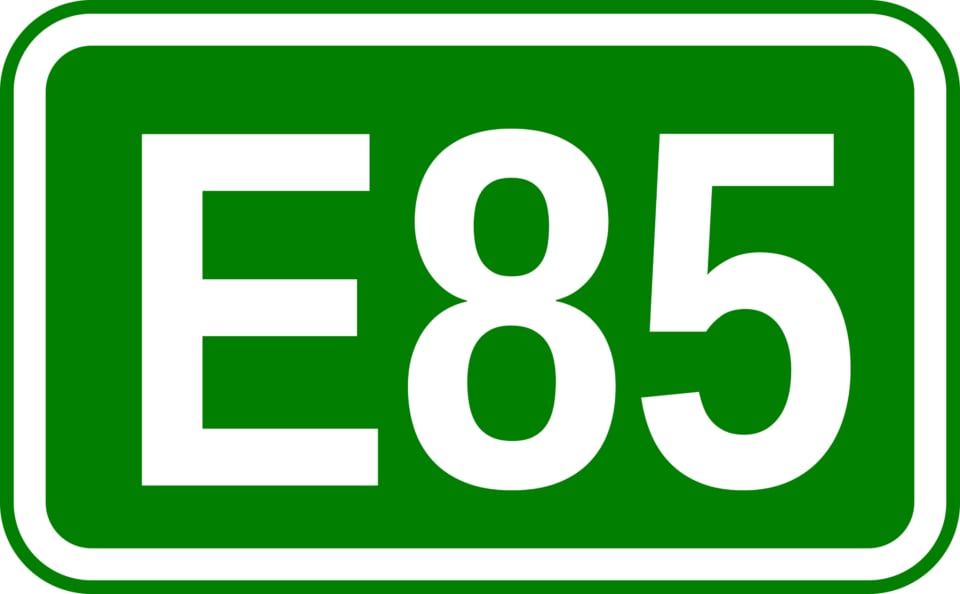
There are several companies currently distilling or refining ethanol so you’re likely to see many different logos.
Q: I’ve read that all gasoline sold in the U.S. contains 10 percent ethanol. Is that true?
A: Not entirely. However, currently 96- to 97-percent of pump gasoline sold in the U.S. is blended with what averages to 10-percent ethanol. This was part of the EPA’s Reformulated Fuel Standard (RFS) that eliminated or reduced the use of other octane-enhancing additives that were deemed dangerous. In certain portions of the country you can purchase E0 or gasoline that does not contain ethanol. However, these fuels are blended with much higher concentrations of octane improving chemicals called aromatics that increase the emission of exhaust toxins.
Q: I’ve read several magazine stories where supercharged engines really benefit from E85. Is there any advantage to using E85 for a naturally-aspirated engine?
A: Absolutely. First, E85 offers an excellent octane or anti-knock index (AKI) rated between 100 and 105 octane. This can allow increasing the static compression ratio up to as much as 13.0 to 14.5:1 and will certainly improve performance on engines even at 11.0:1. Plus, E85 reduces inlet air temperatures which improves power by cooling the air entering the cylinder. Cooler air is denser, which adds power. There will be significant tuning changes necessary when using E85 instead of gasoline, but high-compression engines can especially benefit from E85.
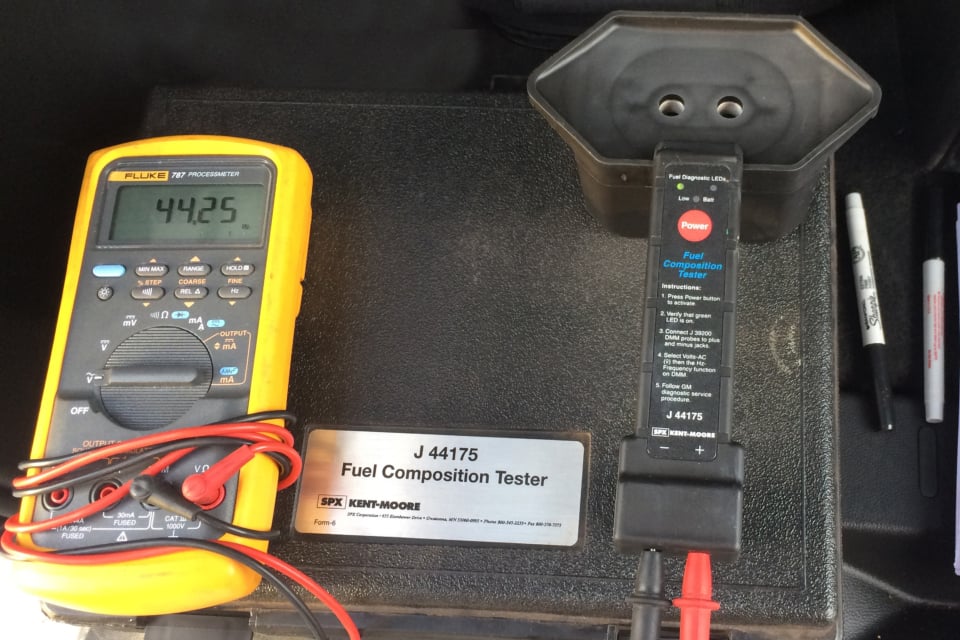
If you are interested in a more exact test of ethanol percentage of blending, Kent-Moore has a tool that accurately measures the blended percentage of ethanol in the fuel. You can find this listed under PN J44175.
Q: I hear one of the advantages of E85 is something called heat of vaporization. What does that mean?
A: The term most commonly used is latent heat of vaporization. What this refers to is the amount of heat required to convert a liquid—in this case E85—into a gas or vapor at a constant temperature and pressure. What this means is that when ethanol vaporizes, it pulls heat out of the air in the process, which cools the surrounding air. Ethanol has three times the cooling effect, by volume, than gasoline and four times the cooling based on BTU content. Cooling the inlet air simultaneously reduces the engine’s sensitivity to octane. This is why engines tend to knock or detonate with higher inlet air temperatures. When E85 fuel vaporizes in the intake manifold, it cools the air, making the engine less sensitive to detonation.
Q: I’ve heard that the percentage of ethanol in E85 can vary. Is there an easy way to test the actual percentages of ethanol and gasoline?
A: There are several inexpensive E85 testers on the market. Most of them merely have you add a specific amount of water into a tube and fill the rest with your E85 fuel test sample. The water will separate out the gasoline and you can read the percentage right on the side of the tube. This is a simple test that can have an error factor of up to five-percent. The more precise tools are the hand-held electronic devices that are within one-percent. There are also OE sensors that are designed to be permanently mounted in the vehicle’s fuel line. Percentages of E85 will vary most often during winter when the percentage of gasoline is increased to improve cold weather starting for Flex-fuel vehicles.

Production flex-fuel engines are designed to run on differing percentages of ethanol, requiring an ethanol content sensor in the fuel system. Several companies, including Innovate Motorsports, offer a gauge that will display the percentage of ethanol in the fuel using one of these factory flex-fuel sensors.
Q: I keep reading about E98. Why isn’t it just E100 – pure ethanol?
A: The term E98 is used as a more accurate accounting of the total amount of ethanol. For the practical purposes of using ethanol as a fuel, E98 is essentially just ethyl-alcohol or ethanol plus 2-percent gasoline so that it cannot be consumed.
Q: I’ve been told that if I put E85 in my older muscle car, I will have to use a special and very expensive PTFE fuel line. Is that true?
A: It is a good practice to replace the original fuel system in an older car when building a performance car, with the emphasis on eliminating corroded, bent, or otherwise damaged fuel line with fresh new material. While ethanol has taken the blame for much of the “damage” that has occurred from reformulated gasoline (RFG), it’s important to point out that 25-percent of US fuel contains aromatics that are also detrimental to fuel systems. Over time, it has been shown that it is these aromatics, and not necessarily the ethanol, that can cause fuel system damage. The polytetrafluoroethylene (PTFE) linings now popular for performance fuel systems is similar to what the OE manufacturers use for fuel systems today. It is not mandatory that you use the PTFE style fuel line, but it will offer long-term reliability.
Q: I know that pure alcohol burns almost invisible in daylight. Does E85 also burn invisibly?
A: Pure methanol (wood alcohol) burns with a pale blue light that is nearly invisible in daylight. This may be what you are referring to. Straight ethanol, the alcohol used in E85, burns with a pale yellow flame. Under bright daylight conditions, burning E98 will be very difficult to see. Mixing 15 percent gasoline with ethanol (E85) produces a much more orange hue to the flame, making it very easy to see in daylight and therefore much safer as it relates to seeing the flame.
Q: I hear that E85 is not really E85 anymore. What is it?
A: The American section of the International Society for Testing and Measurements (ASTM) fuel standards and other regulatory rules now call out Ethanol Flex Fuel instead of E85. This allows the fuel regulations to provide the same fuel properties throughout the entire country to be anywhere from E51 to E83. If that sounds confusing—it’s because it is! The point is you will need to be aware of the fuel coming out of that yellow-handled pump—it often will not be true E85.
We hope this has cleared up some of the misconceptions and “So I heard” questions you may have related to the use of E85 and (or) ethanol in your hot rod. Thanks for reading!


